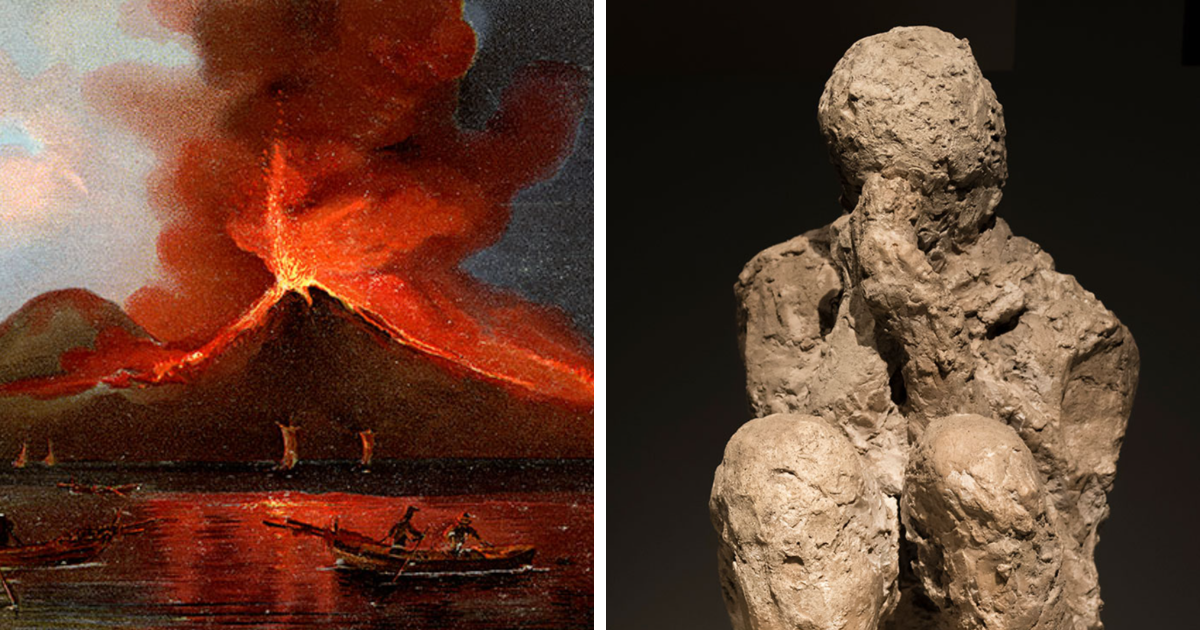Buried Secrets of Pompeii: A Parent’s Last Desperate Act Uncovered, Revealing Haunting New Revelations
Imagine stumbling upon a time capsule from nearly 2,000 years ago that not only showcases the lavish lifestyle of ancient Pompeii’s elite but also captures the heart-wrenching final moments of a family trapped by one of history’s most notorious volcanic disasters. As volcanic ash settled over the Roman domus on Via del Vesuvio, it froze in place a desperate act of parental love—an attempt to shield their child from the unstoppable fury of Mount Vesuvius’s eruption in 79 AD. It’s a haunting tableau where art and agony collide, preserved perfectly beneath layers of pumice and ash, reminding us that behind the ruins and frescoes lie stories of real people facing unimaginable devastation. Is it possible that in our high-tech world, we can truly grasp the intensity of that tragedy—or will it forever remain a tragic snapshot in frozen time? Step inside this astonishing discovery that peels back the centuries and reveals the raw human drama etched into Pompeii’s charred heart. <a href="https://www.boredpanda.com/new-pompeii-discovery-reveals-true-extent-of-human-suffering/?mediaid=Mount-Vesuvius-erupting-6821e8a684851_700″>LEARN MORE
The desperate final moments of a family caught in the catastrophic eruption of Mount Vesuvius in 79 AD have been discovered, offering a sobering reminder of the human cost behind one of antiquity’s most infamous tragedies.
The finding comes from a recently excavated Roman domus—an urban townhouse occupied by the wealthy of the era—on Via del Vesuvio, one of Pompeii’s main thoroughfares.
The home lay buried under volcanic debris for nearly 2,000 years.
Despite the fury of the eruption perfectly preserving the residence’s frescoed walls and artifacts, nothing impacted archeologists more than the evidence of the victims’final actions—parents doing everything in their power to protect their children from the inevitable.
Archaeologists discovered new remains of a family caught in the eruption of Mount Vesuvius
Image credits: Culture Club / Bridgeman / Getty Images
Gabriel Zuchtriegel, director of the Archaeological Park of Pompeii, explained how the family’s valiant attempt at survival was evident in their final gestures. As ash and pumice began to rain down from the sky, clogging the streets and destroying buildings, four adults and a child took refuge in a bedroom.
Image credits: Marc DEVILLE / Gamma-Rapho / Getty Images
In a last act of resistance, the parents attempted to barricade the door with a wooden bed, hoping to keep the encroaching debris out.
“But they didn’t make it,” Zuchtriegel said. Archaeologists were able to deduce what had transpired after discovering the remains of the five family members behind the decomposed bed.
Image credits: pompeiisites
The grim state of the bodies and their expressions of terror contrasted starkly with the beauty of the house’s exquisitely decorated walls. One of the bodies—the smallest—even had a perfectly preserved amulet known as a bulla, which was typically worn by young boys of the era, confirming his age.
Volcanic eruptions are the only natural disaster capable of both destruction and preservation
Image credits: pompeiisites
According to an article by the University of California’s Department of Geological Sciences, volcanic eruptions are unique among all natural disasters for its unparalleled preservation capabilities.
“A constant and rapid fall of volcanic ash from a large eruption is ideal for preserving what exists upon the land at the time of deposition. It can bury them intact without moving them and without completely crushing or burning them,” the paper read.
Image credits: pompeiisites
Volcanic ash also interacts with certain materials, such as bone, by replacing degradable components with counterparts that can last for millions of years.
“Volcanic-ash deposits not only cause widespread death, but also provide the substance that preserves the bones of the buried animals.”
Image credits: pompeiisites
This is why areas affected by eruptions are of special interest to archaeologists. However, the volcanic strata protecting such scientific discoveries are not indestructible and can easily be disrupted by careless human activity, which is why this recent discovery was made in the first place.
Illegal housing developments in the area put the archaeological remains at risk
Image credits: pompeiisites
The excavation is part of an emergency archaeological campaign driven by urgent conservation needs. According to local media, encroaching moisture from nearby illegal housing developments threatens to destabilize the site’s delicate environment, prompting accelerated excavation and preservation efforts.
Image credits: Bettmann Archive / Getty Images
Archaeologists discovered that the house—Phrixus and Helle—was under renovation at the time of eruption, which aligns with evidence of seismic activity in the months leading up to the catastrophe that also caused a neighboring villa—Leda and the Swan—to undergo repairs.





















